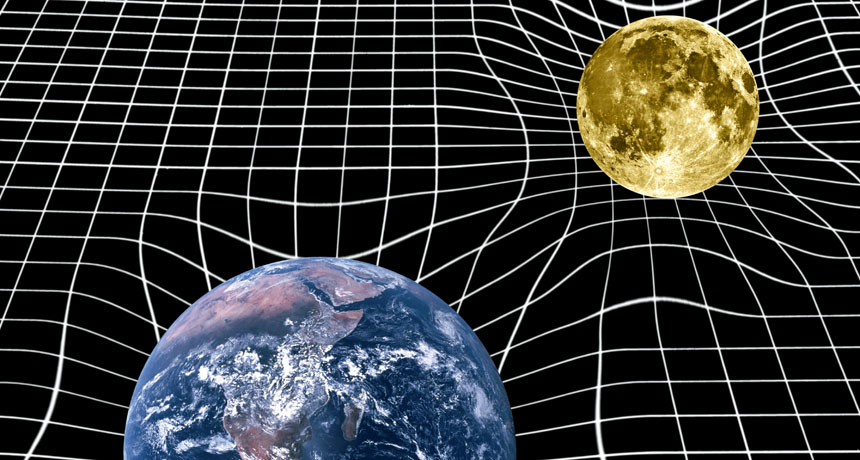Questions for ‘Einstein taught us: It’s all relative’

Artwork illustrating the curvature of spacetime due to the presence of massive bodies. As predicted by Einstein, the mass of Earth and its moon each create gravitational dips in the fabric of spacetime.
Victor de Schwanberg / Science Source